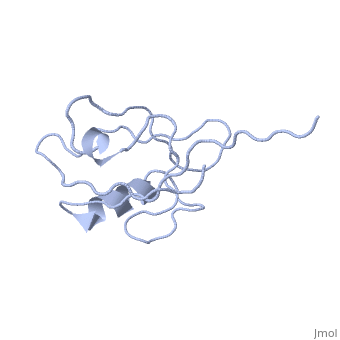Sodium-hydrogen exchange regulatory factor
From Proteopedia
(Difference between revisions)
| Line 6: | Line 6: | ||
'''Sodium-hydrogen exchange regulatory factors''' (NHERF) or '''ezrin-radixin-moesin binding phosphoprotein-50''' or '''PDZ domain-containing protein''' or '''Na+/H+ exchange regulatory cofactor NHE-RF1''' or '''NHERF''' are multifunctional adaptor protein which plays a role in the assembly of signal transduction complexes, linking ion channels and receptors to the actin skeleton<ref>PMID:11141479</ref>. | '''Sodium-hydrogen exchange regulatory factors''' (NHERF) or '''ezrin-radixin-moesin binding phosphoprotein-50''' or '''PDZ domain-containing protein''' or '''Na+/H+ exchange regulatory cofactor NHE-RF1''' or '''NHERF''' are multifunctional adaptor protein which plays a role in the assembly of signal transduction complexes, linking ion channels and receptors to the actin skeleton<ref>PMID:11141479</ref>. | ||
* '''NHERF-1''' is the major isoform present in the brain and it regulates the trans-cellular ion transport through the blood-brain barrier membrane<ref>PMID:26010555</ref>. It transduces cyclic AMP signals that inhibit the sodium-hydrogen exchanger present at the surface of kidney and gut<ref>PMID:12586353</ref>. | * '''NHERF-1''' is the major isoform present in the brain and it regulates the trans-cellular ion transport through the blood-brain barrier membrane<ref>PMID:26010555</ref>. It transduces cyclic AMP signals that inhibit the sodium-hydrogen exchanger present at the surface of kidney and gut<ref>PMID:12586353</ref>. | ||
| + | * '''NHERF-2''' is a negative regulator of endothelial proliferation and may have important roles in endothelial homeostasis and vascular modeling<ref>PMID:22343917</ref>. | ||
Revision as of 08:59, 13 August 2024
| |||||||||||

